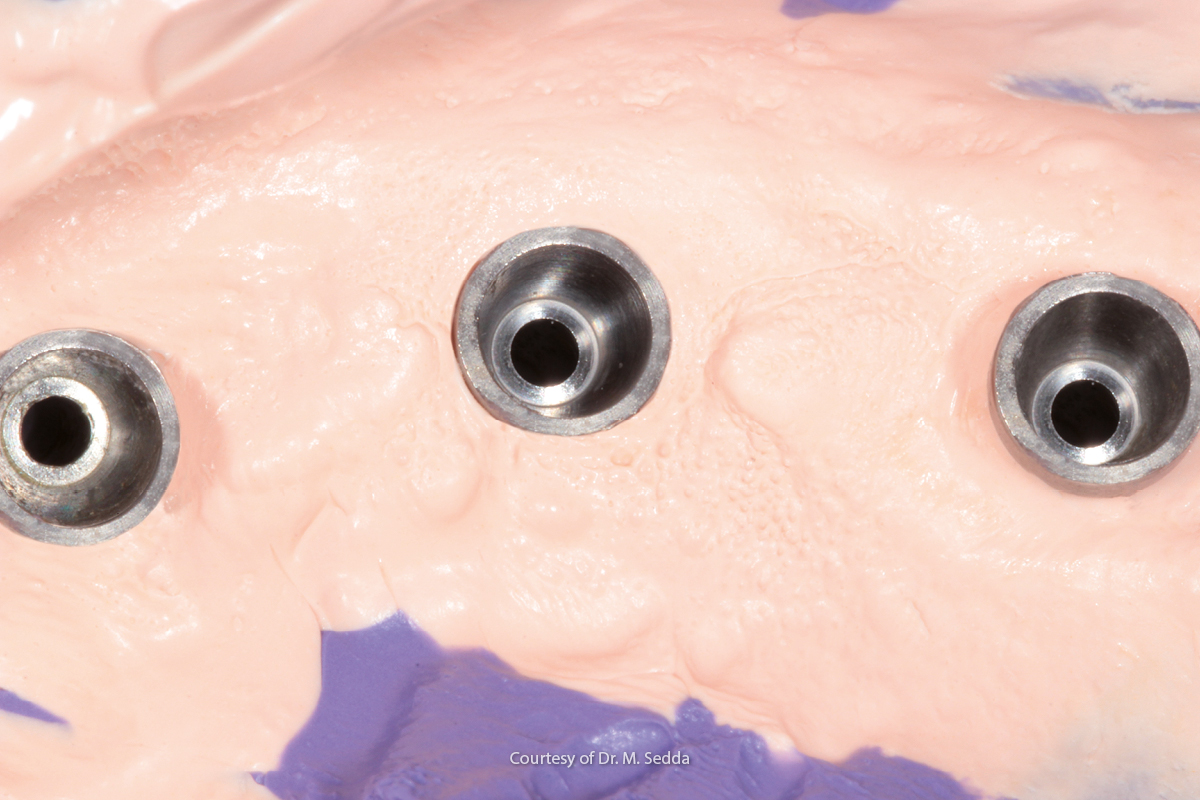
The purpose of implant prosthesis impressions is to record with great precision the three-dimensional spatial relationship between the implants and the other structures of the oral cavity (adjacent teeth, alveolar crest, etc.).
A number of factors influence the accuracy and precision of impressions taken on implant prostheses. Overlooking certain complicating situations, such as the slant of the implants and their position inside the oral cavity, the important choices that influence the success of prostheses on implants include the type of material and the technique used.
Techniques for impression-taking on implants and materials
Different kinds of impressions can be taken on implants. With pick-up impressions (open-tray technique) the transfer remains inside the impression. It goes without say that for this type of impression the transfers must have long enough implant connection screws to protrude from the walls of the impression tray. The technician will subsequently place the implant analogue on the transfer by tightening the connection screw. In order to avoid transfer rotation issues during this phase, it is essential for the surface of the transfer to be completely incorporated, without any gaps, inside the impression material and for good adhesion to be achieved between the transfer and the impression material. In this sense, the use of a light impression material (for both polyvinylsiloxane and polyether impressions) and its positioning directly on the transfer, makes it possible to obtain the greatest contact with the transfer, thanks to the chemical and physical flow characteristics of light material, such as a low consistency and viscosity.
This characteristic can prove useful also in snap impressions (repositioned or closed-tray technique). In this case, the transfer is not removed with the impression, but remains attached to the implant. Once the impression has been removed from the oral cavity, the short screw (compared to pick-up impression transfers) of the transfer is loosened and it is connected to the laboratory analogue. The whole unit is then repositioned in the elastomer. Here the ability to reposition the transfer in the impression depends on the extent to which the material has been able to accurately reproduce the transfer body.
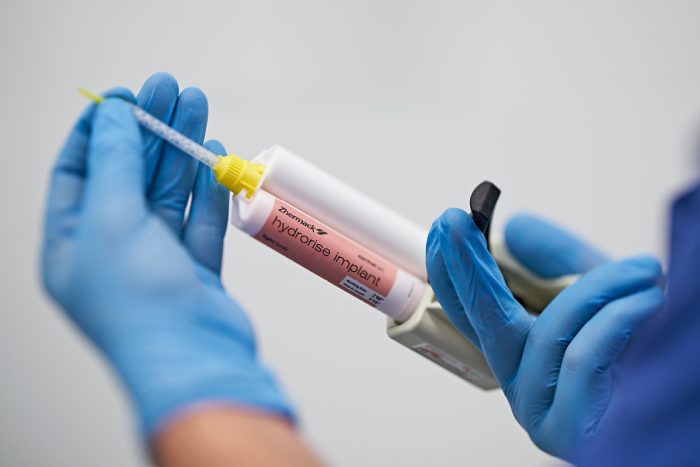
However, the disadvantage of snap impressions is that it is difficult to reposition the metal piece inside the mass of elastomer impression material, which may not be correct, without the operator realising it. Implant manufacturers have devised various solutions in order to improve this aspect. Some have attempted to modify the shape of the transfer, others have introduced plastic or metal caps that can be inserted on the transfer and removed with the impression in order to facilitate the repositioning of the transfer in the impression at the end of the procedure. However, also in these cases, light material is essential for firmly retaining the additional transfer part in the impression and subsequently resisting its repositioning with the analogue screwed on into the impression.
The excellent flowability of light material over wet surfaces, due to its the reduced contact angle, can also prove useful for other purposes. For example, when it is necessary to associate in a single impression, a fixed prosthesis on natural teeth with another on implants, the use of light material is able to guarantee the fine detail reproduction required to correctly record both the dental preparations and their respective finish lines and, as mentioned previously, to include the whole of the transfer surface.
Another important factor, which again depends on the fluidity of the material used and the contact angle, is the reproduction of the peri-implant mucosal junction. Correct impression-taking on implants must faithfully reproduce the soft tissues around the implant, without stretching or compressing them. Light material is perhaps the only elastomeric material consistency that permits a correct reproduction of this area without the risk of compressing it excessively. This aspect is also, and especially, important for the dental technician, who will have to obtain a correct emergence profile in line with the adjacent soft tissues in order to maintain its health and permit the maintenance of correct hygiene in the area.
Other factors influencing impression-taking on implants
Although the use of light elastomeric materials can be useful for implant prostheses, the success of impression-taking on implants does not depend on this alone.
The transfer’s ability to remain trapped inside the impression (open-tray technique), for example, does not depend exclusively on the type of material used, but also on the retentivity of the transfer body. It is preferable for the transfer to have a retentive body, with undercut or retention areas that reduce the risk of mobilisation within the impression material, thereby simultaneously increasing the contact surface.
The rigid splinting of the transfers to one another before the impression-taking phase is also often important for stabilising their position and avoiding possible movements during the tightening of the laboratory analogues and development of the gypsum model.
It can therefore be concluded that the use of light material in implant prostheses brings certain clinical advantages. However, it must be considered as part of a correct impression-taking technique that is suited to the specific clinical situation.
Do you want more information on Hydrorise Implant Light Body?
Go to product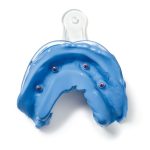
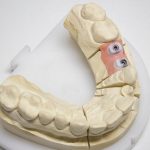
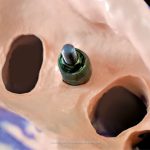
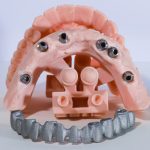

 Zhermack SpA has been one of the most important producers and international distributors of alginates, gypsums and silicone compounds for the dental sector for over 40 years. It has also developed solutions for the industrial and wellbeing sectors.
Zhermack SpA - Via Bovazecchino, 100 - 45021 Badia Polesine (RO), Italy.
Zhermack SpA has been one of the most important producers and international distributors of alginates, gypsums and silicone compounds for the dental sector for over 40 years. It has also developed solutions for the industrial and wellbeing sectors.
Zhermack SpA - Via Bovazecchino, 100 - 45021 Badia Polesine (RO), Italy.


